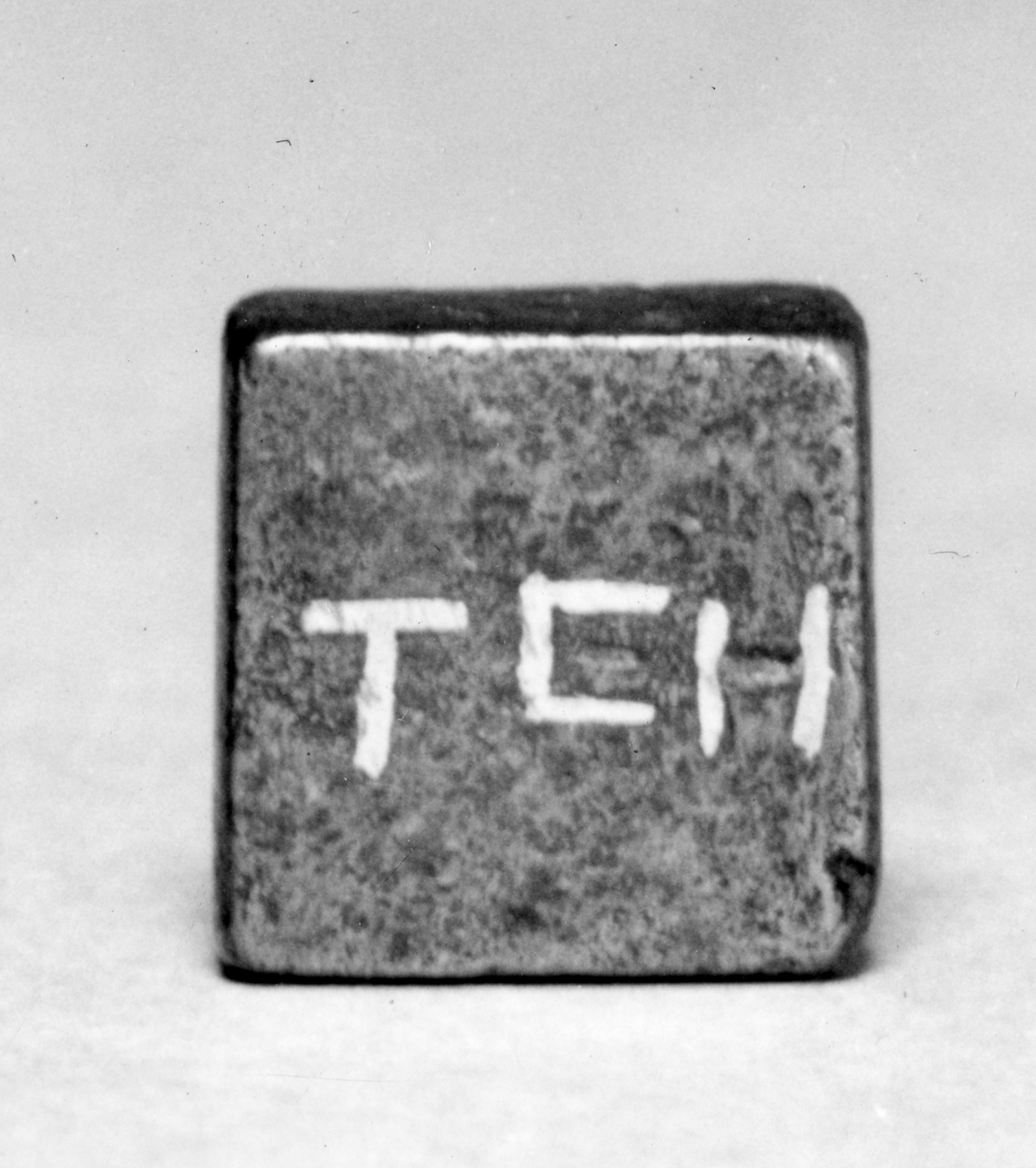Flat Weight
5th-6th century (Late Antique)
bronze inlaid with silver
(Roman Empire )
(Roman Empire )
Small weights like this one were used with a scale for weighing light, valuable objects like coins and jewelry. To fight widespread corruption, bronze weights were controlled by the government, with the value engraved directly onto the square.
Provenance
Provenance (from the French provenir, 'to come from/forth') is the chronology of the ownership, custody, or location of a historical object. Learn more about provenance at the Walters.
Provenance (from the French provenir, 'to come from/forth') is the chronology of the ownership, custody, or location of a historical object. Learn more about provenance at the Walters.
Maurice Nahman, Cairo, by purchase; Henry Walters, Baltimore, 1930, by purchase; Walters Art Museum, 1931, by bequest.
Exhibitions
| 1947 | Early Christian and Byzantine Art. Baltimore Museum of Art, Baltimore. |
Measurements
H: 9/16 in. (1.5 cm)
Credit Line
Acquired by Henry Walters, 1930
Location in Museum
Accession Number
In libraries, galleries, museums, and archives, an accession number is a unique identifier assigned to each object in the collection.
In libraries, galleries, museums, and archives, an accession number is a unique identifier assigned to each object in the collection.
54.56


